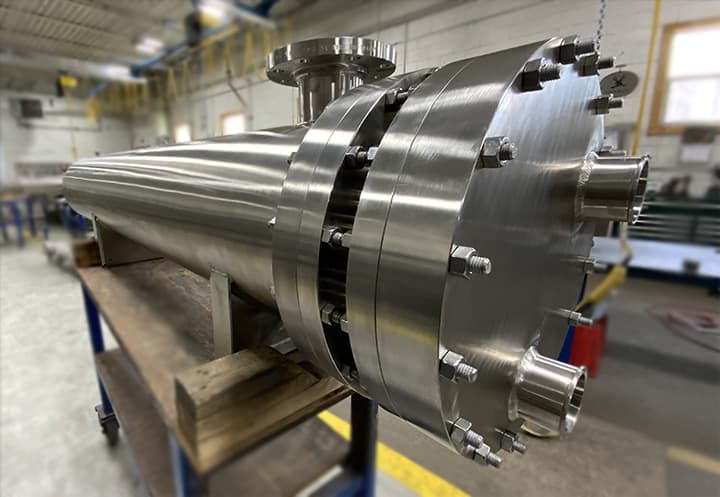Cross contamination is a universal concern—from the kitchen to large-scale manufacturing. In food production, chefs separate raw meats from fresh produce. In storage, allergenic ingredients like nuts are kept apart from other goods. And in industrial facilities—whether producing dairy, personal care products, or pharmaceuticals—equipment like shell and tube heat exchangers must be designed and maintained to prevent product contamination.
For industries that rely on heat exchangers to pasteurize, concentrate, or stabilize products, contamination risks can have serious consequences: costly recalls, lost product, and potential safety hazards.
Here’s how to reduce the risk and keep operations clean, efficient, and compliant.
1. Choose Equipment Built for Sanitation
The construction materials and manufacturing environment of your shell and tube heat exchangers directly impact their cleanliness and performance.
-
Stainless steel is the industry standard for sanitary processing because of its resistance to fouling and corrosion.
-
However, not all stainless steel fabrication environments are the same. If an exchanger is built in a facility that also works with carbon steel, there’s a risk of cross-contamination with particles that can compromise performance.
At Enerquip, we exclusively fabricate in stainless steel in our Medford, Wisconsin, facility, ensuring your equipment remains free from carbon steel contamination and meets high sanitary standards.
2. Use the Right Tube Design
One common cause of cross contamination is shell-side fluid mixing with tube-side fluid inside the exchanger. The right tube design helps prevent this.
-
Double tube sheets add a critical barrier between fluids, greatly reducing the risk of mixing. In a double tube sheet design, a second outer tube sheet is added to further seal and separate the tubes and the shell. The gap between the tube sheets allows for differential radial thermal expansion, minimizing stress on the tube-to-tube sheet expansions.
-
Enerquip’s pharma-grade heat exchangers are built with double tube sheets, making them ideal for pharmaceutical, nutraceutical, animal health, and personal care industries.
-
In the event of a leak in a tube-to-tube sheet joint, shell-side or tube-side fluids would flow out into the gap between the two tube sheets, instead of the leak causing cross-contamination issues. Leaks can also be easily detected and fixed sooner.
3. Manage Pressure Differentials
Pressure balance inside the exchanger plays a key role in contamination prevention.
-
Standard practice: Keep shell-side pressure lower than tube-side pressure.
-
Why it matters: In the event of a leak, product flows into the heat transfer medium—not the other way around—reducing contamination risk.
4. Inspect and Clean Regularly
Preventive maintenance is one of the most effective defenses against cross contamination.
-
Routine inspections can catch early signs of tube or gasket leaks before they cause problems.
-
Fouling buildup should be addressed quickly. Left unchecked, fouling can spoil product and reduce efficiency. Adjust cleaning frequency, sanitation procedures, or heat transfer fluids as needed.
A well-designed Clean-in-Place (CIP) program ensures ongoing sanitation and extends the life of your equipment.
Protecting Product Quality and Plant Efficiency
Preventing cross contamination isn’t just about avoiding costly problems—it’s about protecting product integrity, customer safety, and operational reliability.
Whether you’re upgrading equipment or fine-tuning your maintenance plan, selecting the right shell and tube heat exchanger—and keeping it in top condition—pays off in performance and peace of mind.
Ready to explore Enerquip’s stainless steel shell and tube heat exchanger options? Our engineers can help you choose a design that keeps your process clean, compliant, and efficient. Contact us today.
More from the Enerquip Blog
- How to Store Your Process Equipment Before Installation
- What You Need to Know About Cleaning Different Tube Configurations
- TEMA Types Explained
- How Almost Any Industry Can Benefit from Waste Heat Recovery
- How Food Safety Regulations Shape Equipment Decisions in Animal Food Manufacturing
- How Evaporation Equipment Powers Food, Pharma, Energy & More

